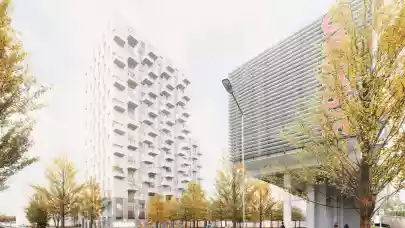
In 2023, offices in Poland will be more expensive, and their availability in the top locations of the largest cities will be lower, says Mateusz Strzelecki, Partner, Head of Tenant Representation at Walter Herz.
Increases in office lease costs, limited availability of space in high-standard buildings located in central business areas and the low level of new supply are the main indicators that will affect the situation in the sector in 2023.
The last three years have brought many changes to the office market. The system of work and the way of arranging space have changed. The process of rapid development of the office market over the years has been halted. The growing costs of construction and project financing make it difficult for investors to estimate the final amount of the construction budget, and therefore they are postponing the start of construction of new investments.
New supply is dropping hard
In regional markets, 30 per cent less office space is emerging than before the pandemic, while five times fewer offices are being built in Warsaw than three years ago. The availability of prime space in the Warsaw market is declining. The effect of limited, new supply with demand remaining at a lower than in 2019, but the stable level is a slight increase in rental rates. This applies in particular to high-class office buildings located in the centre and in business zones, situated outside the very centre of Warsaw, but also the best real estate on the largest regional office markets in the country.
The new office offer is modest. In Warsaw in the third quarter of this year, most of the space was provided by Varso Tower, which including the spire, is the tallest building in the European Union, offering almost 64 thousand sqm of space.
The largest amount of office space in the country is under construction in the capital of Lower Silesia. Investments underway in this city include Infinity (22 thousand sqm) and Centrum Południe III (20 thousand sqm). Among the properties under construction in Kraków, there are Ocean Office Park B (26.5 thousand sqm) and Kreo (24 thousand sqm), while Andersia Silver (40 thousand sqm) and Nowy Rynek E (20 thousand sqm) are under construction in Poznań.
Rental costs go up
We have record-breaking inflation, and forecasts indicate that it will continue to grow, which translates into the cost of the office lease. The main challenge in 2023 will be maintenance charges. Due to inflation, rising costs of energy and expected increases in the minimum wage, they expect to increase. This will translate into the number of advances on maintenance charges. In addition, utility prices will increase.
Nowadays, the effective process of leasing an office and negotiating contract terms, as well as cooperation with professional advisors on the commercial real estate market, will become all the more important, because the provisions included in contracts should protect tenants in more difficult times. Negotiating optimal business and legal terms will require much more time and commitment. A new analysis and rental process should be started at least 2 years before the end of the ongoing contract. It will give more time to negotiate all items at every stage of operations and a chance for significant cost optimization.
A five-year lease agreement currently does not give a chance to develop a move-in ready office without additional surcharges for the tenant. Prices of finishing works increased on average by 30 per cent. Tenants must take into account the fact that in the case of demanding projects, additional payments for interior design will be necessary. In order to compensate landlords for the increase in the cost of fit-out and lower the charges for tenants, longer, seven-year contracts are now concluded more often.
Negotiating lease terms
Therefore, when negotiating contracts, attention should be paid to the amount of the budget for fit-out, rent exemptions and mechanisms for limiting or controlling the number of maintenance charges contained in the contract.
Negotiating terms of lease agreements are, contrary to popular belief, a large field. One can negotiate, among others: contractual penalties, grounds for termination of the contract, the right to sublet and assign, the number of maintenance charges, break option, and liability. We always advise our clients to attach the final cost estimate to the Lease Agreement, in order to avoid additional charges for fit-out later.
Speaking of the current market, one cannot fail to mention the work system and functions of today's offices. It should be noted that the goal today is not just renting and arranging space, but creating a place that will be conducive to rebuilding contacts with colleagues, building bonds and improving communication in the company, which will translate into increased satisfaction from work.
Most employers are facing the new preferences of their employees, who are reluctant to return to their offices. Despite most companies determining the proportions of remote work, which most often falls within the range of 2 or 3 days a week (on average 40-60% of working time), office attendance oscillates around 30 per cent.
Hybrid mode shapes workplaces
In the near future, the offices will function as creative, cross-functional, training centres. Their main function will be the exchange of ideas, knowledge and building relationships and social capital. The purpose of re-arranging offices and adapting them to this role is to create an atmosphere of the place that will attract its employees.
In order to adapt workplaces to the hybrid mode, companies are currently reducing the number of desks in favour of collaborative spaces. They are switching to solutions using flexible workstations, which forces sharing. They are introducing a clean desk policy. Lockers are also becoming available in the offices, ensuring a quiet, isolated space. Office space is arranged in such a way that it is as flexible and functional as possible.
The offices used to serve largely as space for guests and external contractors, now they primarily serve the team. Their space is supposed to activate employees and provide them with tools not available at home. Great emphasis is now placed on modern conference zones that support hybrid meetings, creative and social spaces, such as large kitchens with dining rooms for employee integration. Often this part is extended into a chillout zone or places for less formal meetings.



